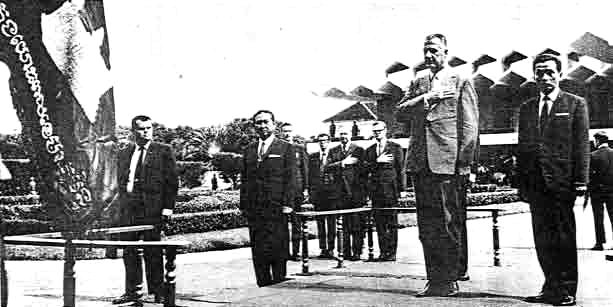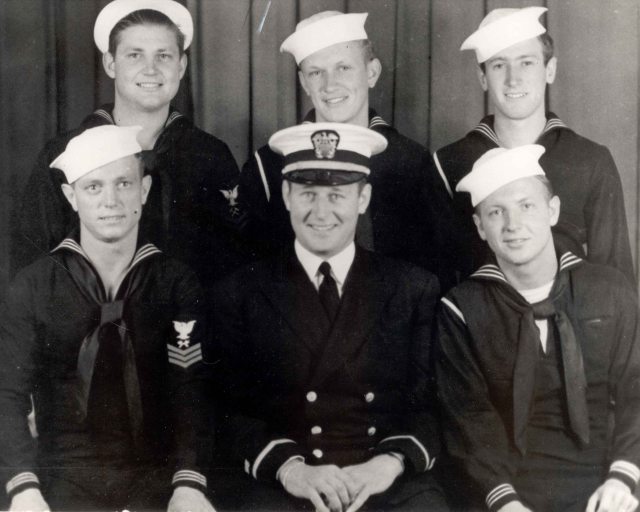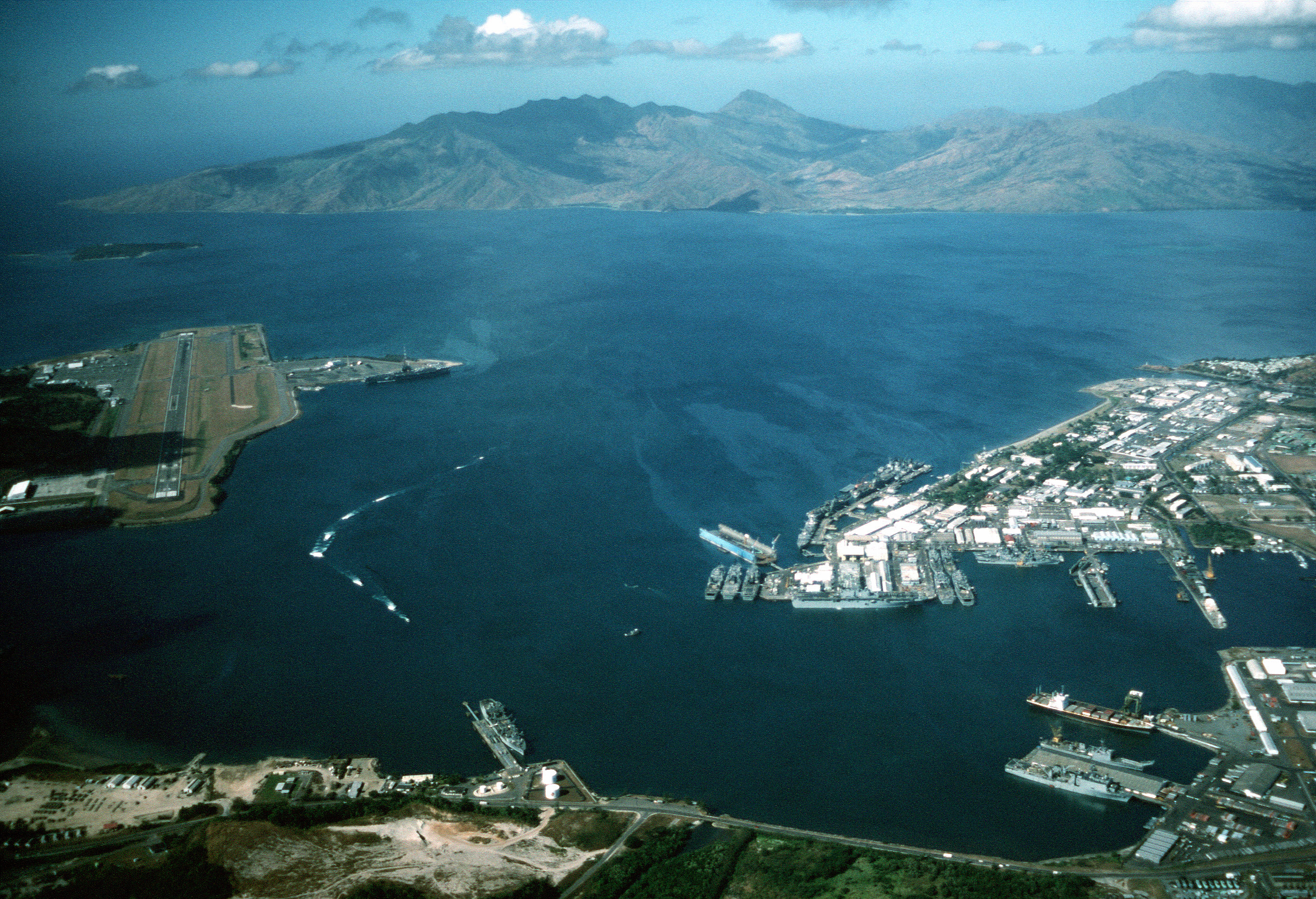|
Cambodian Navy SEALs
The Cambodian Navy SEALs were the main elite Maritime Special Operations Force of the Khmer National Navy ( French: ''Marine National Khm├©re'' ŌĆō MNK) during the 1970-75 Cambodian Civil War. Origins In mid-1973, with the encouragement of the U.S. Naval attach├® in Phnom Penh, Lieutenant commander Richard Marcinko, the MNK Fleet Command decided to raise its own special warfare unit, the Cambodian SEALs. An initial group of 24 recruits was drawn from an existing Combat Swimmer Unit ( French: ''Nageurs de Combat'') and from the Cambodian Marine Corps, being sent to the Naval Amphibious Base Coronado at San Diego, California in the United States and to Subic Bay Naval Base in the Philippines to attend basic courses manned by U.S. Navy SEAL instructors from the Amphibious Group 1, the forward-based operational arm of the U.S. Naval Special Warfare Force in the Pacific. At Coronado and Subic Bay, the Cambodian inductees underwent five weeks of basic Underwater Demolitions/SEAL t ... [...More Info...] [...Related Items...] OR: [Wikipedia] [Google] [Baidu] |
Khmer Republic
The Khmer Republic ( km, ßפß×Čß×Æß×Čß×Üß×Äß×Üß×ŖߤÆß×ŗß×üߤÆßלߤéß×Ü, ; french: R├®publique khm├©re) was a pro-United States military-led republican government of Cambodia that was formally declared on 9 October 1970. The Khmer Republic was politically headed by Prime Minister Lon Nol and Prince Sisowath Sirik Matak who took power in the 18 March 1970 coup against Prince Norodom Sihanouk. The main causes of the coup were Norodom Sihanouk's toleration of the North Vietnamese activity within Cambodia's borders, allowing heavily armed Vietnamese communist outfits ''de facto'' control over vast areas of eastern Cambodia. Another important factor was the dire state of the Cambodian economy, an indirect result of Sihanouk's policies of pursuing neutrality. With the removal of Sihanouk, the existing Kingdom of Cambodia became a republic, officially removing Sisowath Kossamak. The character of the new regime was far-right and militaristic; most significantly, it ended Sihanouk's ... [...More Info...] [...Related Items...] OR: [Wikipedia] [Google] [Baidu] |
Naval Amphibious Base Coronado
Naval Amphibious Base Coronado (NAB Coronado) is a US naval installation located across the bay from San Diego, California. The base, situated on the Silver Strand, between San Diego Bay and the Pacific Ocean, is a major Navy shore command, supporting over 30 tenant commands, and is the West Coast focal point for special and expeditionary warfare training and operations. The onbase population is 5,000 military personnel and 7,000 students and reservists. The base is one of the eight components of Naval Base Coronado (NBC). History Formally commissioned in January 1944, Naval Amphibious Base (NAB), Coronado provides a shore base for the operations, training, and support of naval amphibious units on the West Coast. It is one of only two Navy amphibious training bases in the United States. NAB is approximately 1,000 acres (4 km2) in size and is composed of the Main Base, training beaches, California least tern preserve, recreational marina, enlisted family housing, and state ... [...More Info...] [...Related Items...] OR: [Wikipedia] [Google] [Baidu] |
Demolitions
Demolition (also known as razing, cartage, and wrecking) is the science and engineering in safely and efficiently tearing down of buildings and other artificial structures. Demolition contrasts with deconstruction, which involves taking a building apart while carefully preserving valuable elements for reuse purposes. For small buildings, such as houses, that are only two or three stories high, demolition is a rather simple process. The building is pulled down either manually or mechanically using large hydraulic equipment: elevated work platforms, cranes, excavators or bulldozers. Larger buildings may require the use of a wrecking ball, a heavy weight on a cable that is swung by a crane into the side of the buildings. Wrecking balls are especially effective against masonry, but are less easily controlled and often less efficient than other methods. Newer methods may use rotational hydraulic shears and silenced rock-breakers attached to excavators to cut or break thro ... [...More Info...] [...Related Items...] OR: [Wikipedia] [Google] [Baidu] |
Jungle Warfare
Jungle warfare is a term used to cover the special techniques needed for military units to survive and fight in jungle terrain. It has been the topic of extensive study by military strategists, and was an important part of the planning for both sides in many conflicts, including World War II and the Vietnam War. The jungle has a variety of effects on military operations. Dense vegetation can limit lines of sight and arcs of fire, but can also provide ample opportunity for camouflage and plenty of material with which to build fortifications. Jungle terrain, often without good roads, can be inaccessible to vehicles and so makes logistical supply and transport difficult, which in turn places a premium on air mobility. The problems of transport make engineering resources important as they are needed to improve roads, build bridges and airfields, and improve water supplies. Jungle environments can also be inherently unhealthy, with various tropical diseases that have to be preven ... [...More Info...] [...Related Items...] OR: [Wikipedia] [Google] [Baidu] |
Intelligence-gathering
This is a list of intelligence gathering disciplines. HUMINT Human intelligence (HUMINT) are gathered from a person in the location in question. Sources can include the following: * Advisors or foreign internal defense (FID) personnel working with host nation (HN) forces or populations * Diplomatic reporting by accredited diplomats (e.g. military attach├®s) * Espionage clandestine reporting, access agents, couriers, cutouts * Military attach├®s * Non-governmental organizations (NGOs) * Prisoners of war Prisoners of war (POWs) or detainees * Refugees * Routine patrolling (military police, patrols, etc.) * Special reconnaissance * Traveler debriefing (e.g. CIA Domestic Contact Service) MI6 is often thought to use human intelligence to operate in different countries or Britain itself to protect the country from global affairs. However, this is usually confused with their brother agency MI5, which focuses on the security of Britain. GEOINT Geospatial intelligence (GEO ... [...More Info...] [...Related Items...] OR: [Wikipedia] [Google] [Baidu] |
Reconnaissance
In military operations, reconnaissance or scouting is the exploration of an area by military forces to obtain information about enemy forces, terrain, and other activities. Examples of reconnaissance include patrolling by troops (skirmishers, long-range reconnaissance patrol, U.S. Army Rangers, cavalry scouts, or military intelligence specialists), ships or submarines, crewed or uncrewed reconnaissance aircraft, satellites, or by setting up observation posts. Espionage is usually considered to be different from reconnaissance, as it is performed by non-uniformed personnel operating behind enemy lines. Often called recce (British, Canadian and Australian English) or recon (American English), the word for this activity has at its root the associated verb ''reconnoitre'' or ''reconnoiter''. Etymology The word from the Middle French ''reconoissance''. Overview Reconnaissance conducted by ground forces includes special reconnaissance, armored reconnaissance, amp ... [...More Info...] [...Related Items...] OR: [Wikipedia] [Google] [Baidu] |
Commando
Royal Marines from 40 Commando on patrol in the Sangin">40_Commando.html" ;"title="Royal Marines from 40 Commando">Royal Marines from 40 Commando on patrol in the Sangin area of Afghanistan are pictured A commando is a combatant, or operative of an elite light infantry or special operations force, specially trained for carrying out raids and operating in small teams behind enemy lines. Originally "a commando" was a type of combat unit, as opposed to an individual in that unit. In other languages, ''commando'' and ''kommando'' denote a "command", including the sense of a military or an elite special operations unit. In the militaries and governments of most countries, commandos are distinctive in that they specialize in unconventional assault on high-value targets. In English, to distinguish between an individual commando and a commando unit, the unit is occasionally capitalized. Etymology From an ancient lingual perspective the term commando derives from Latin ''commen ... [...More Info...] [...Related Items...] OR: [Wikipedia] [Google] [Baidu] |
Underwater Demolition Teams
Underwater Demolition Teams (UDT), or frogmen, were amphibious units created by the United States Navy during World War II with specialized non-tactical missions. They were predecessors of the navy's current SEAL teams. Their primary WWII function began with reconnaissance and underwater demolition of natural or man-made obstacles obstructing amphibious landings. Postwar they transitioned to scuba gear changing their capabilities. With that they came to be considered more elite and tactical during the Korean and Vietnam Wars. UDTs were pioneers in underwater demolition, closed-circuit diving, combat swimming, and midget submarine (dry and wet submersible) operations. They later were tasked with ensuring recovery of space capsules and astronauts after splash down in the Mercury, Gemini and Apollo space flight programs. Commando training was added making them the forerunner to the United States Navy SEAL program that exists today. In 1983, after additional SEAL training, ... [...More Info...] [...Related Items...] OR: [Wikipedia] [Google] [Baidu] |
Amphibious Group 1
Amphibious means able to use either land or water. In particular it may refer to: Animals * Amphibian, a vertebrate animal of the class Amphibia (many of which live on land and breed in water) * Amphibious caterpillar * Amphibious fish, a fish that is able to leave water for extended periods of time * Amphibious insect, an insect which lives in the air or on land and breeds in water * Amphibious rat (other) * ''Scolopendra cataracta'', a species of amphibious centipede Arts and media * ''Amphibious'' (2010 film), a thriller film * ''Amphibious'' (2020 film), a drama film * Amphibius (comics), a minor comic book character Technology * Amphibious aircraft, an aircraft capable of landing on either water or land * Amphibious vehicle, a vehicle capable of being driven on both land and water * Amphibious warfare Amphibious warfare is a type of offensive military operation that today uses naval ships to project ground and air power onto a hostile or potentially host ... [...More Info...] [...Related Items...] OR: [Wikipedia] [Google] [Baidu] |
United States Navy SEALs
The United States Navy Sea, Air, and Land (SEAL) Teams, commonly known as Navy SEALs, are the U.S. Navy's primary special operations force and a component of the Naval Special Warfare Command. Among the SEALs' main functions are conducting small-unit special operation missions in maritime, jungle, urban, arctic, mountainous, and desert environments. SEALs are typically ordered to capture or to kill high level targets, or to gather intelligence behind enemy lines. All active SEALs are members of the U.S. Navy. The CIA's highly secretive and elite Special Operations Group (SOG) recruits operators from SEAL Teams, with joint operations going back to the MACV-SOG during the Vietnam War. This cooperation still exists today, as evidenced by military operations in Iraq and Afghanistan. History Origins Although not formally founded until 1962, the modern-day U.S. Navy SEALs trace their roots to World War II. The United States Military recognized the need for the covert reconnaiss ... [...More Info...] [...Related Items...] OR: [Wikipedia] [Google] [Baidu] |
Philippines
The Philippines (; fil, Pilipinas, links=no), officially the Republic of the Philippines ( fil, Republika ng Pilipinas, links=no), * bik, Republika kan Filipinas * ceb, Republika sa Pilipinas * cbk, Rep├║blica de Filipinas * hil, Republika sang Filipinas * ibg, Republika nat Filipinas * ilo, Republika ti Filipinas * ivv, Republika nu Filipinas * pam, Republika ning Filipinas * krj, Republika kang Pilipinas * mdh, Republika nu Pilipinas * mrw, Republika a Pilipinas * pag, Republika na Filipinas * xsb, Republika nin Pilipinas * sgd, Republika nan Pilipinas * tgl, Republika ng Pilipinas * tsg, Republika sin Pilipinas * war, Republika han Pilipinas * yka, Republika si Pilipinas In the recognized optional languages of the Philippines: * es, Rep├║blica de las Filipinas * ar, ž¼┘ģ┘ć┘łž▒┘Ŗž® ž¦┘ä┘ü┘äž©┘Ŗ┘å, Jumh┼½riyyat al-Filibb─½n is an archipelagic country in Southeast Asia. It is situated in the western Pacific Ocean and consists of around 7,641 islands t ... [...More Info...] [...Related Items...] OR: [Wikipedia] [Google] [Baidu] |
Subic Bay Naval Base
Naval Base Subic Bay was a major ship-repair, supply, and rest and recreation facility of the Spanish Navy and subsequently the United States Navy located in Zambales, Philippines. The base was 262 square miles, about the size of Singapore. The Navy Exchange had the largest volume of sales of any exchange in the world, and the Naval Supply Depot handled the largest volume of fuel oil of any navy facility in the world. The naval base was the largest overseas military installation of the United States Armed Forces, after Clark Air Base in Angeles City was closed in 1991.Barber, Ben. "Two decades on, Philippines struggles with U.S. base cleanup". ''The American Legion Magazine'', September 2012: 64. Following its closure in 1992, it was transformed into the Subic Bay Freeport Zone by the Philippine government. In late 2022, plans to reopen the base under the Enhanced Defense Cooperation Agreement emerged after the Philippine Navy reoccupied a portion of the base and a U.S. inves ... [...More Info...] [...Related Items...] OR: [Wikipedia] [Google] [Baidu] |








